A series of missions to the moons of Jupiter and Saturn has revealed their potential to harbour life. Nina Notman looks to the skies
After a series of mission failures, July 1965 saw the first successful flybys of Mars. The US Mariner 4 became the first spacecraft to take close up pictures of another planet, beaming 22 images of the impact-cratered Martian surface back to Earth. Since then, more than 20 successful missions have explored the red plant’s atmosphere and surface.
Thanks to the images and data collected– and by telescopes, both on earth and in space – we now know that billions of years ago, Mars had the three critical ingredients for life. It had an abundance of the chemical building blocks, liquid water on its surface and an energy source (volcanic activity) to power the chemical reactions that make life possible (on Earth that energy source is the sun). Today, the inhospitable surface of Mars is thought to be unsuitable for life, but the possibility of life existing deep beneath its frozen surface hasn’t been ruled out. To date though, no evidence of life – ancient or otherwise – has been found. Mars being habitable, it turns out, doesn’t mean it actually has a habitat.
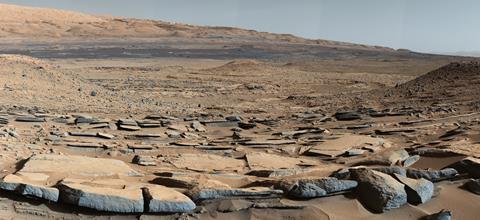
The search for Martian life is ongoing, with a further three missions to Mars planned to launch over the next few years. Longer-term, a number of space agencies are also aiming to collect samples from Mars and return them to Earth for more in-depth analysis. And the search for signs of extraterrestrial life is stretching to the depths of our solar system and beyond.
Europa
The gas giant Jupiter, the next planet beyond Mars in the solar system, is inhospitable to life in any currently imaginable form. But its icy moons – especially Europa – have potential. A number of missions have flown past Jupiter and its moons on route to other places, but Nasa’s Galileo mission was the first designed to specifically orbit the planet and study its moons. It collected images and data in the Jovian system from 1995 to 2003, passing Europa 12 times.
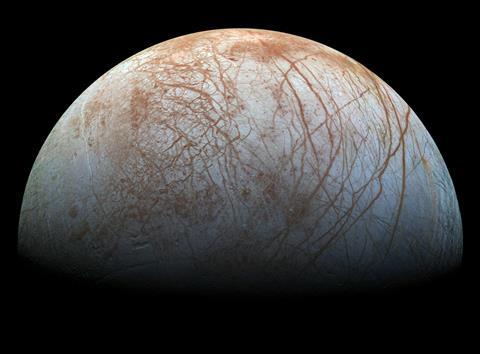
Pictures and data collected by this spacecraft suggest that Europa has a layered structure like Earth: an iron-rich core, a rocky mantle and a crust of ice. Magnetic field measurements found an electric current inside, consistent with a salty liquid ocean beneath the thick crust of ice around the whole planet. Photographs showing huge cracks in the ice, taken by the same mission, support this idea.
Europa’s surface resembles Earth’s sea ice in Antarctica, explains François Poulet from the Institute of Space Astrophysics at the Université Paris-Sud in France: ‘It indicates that the ice is geologically pretty young and it could be proof of its interaction with a reservoir of liquid water.’ In December 2012, the Hubble Space Telescope also detected water vapour above Europa’s South Pole and it was proposed this came from erupting water plumes. Spacecraft have not yet seen these plumes, however, so if they do exist they must be intermittent.
So, Europa probably has water. But what about the other two necessary components to be habitable? It has a source of heat energy coming from the friction of being pulled towards Jupiter’s gravitational field by different amounts during different stages of its elliptical orbit. There is also plenty of radiation around Jupiter to potentially start chemical reactions (strong enough to also very quickly destroy any organic compound formed). But whether it has the correct raw chemical ingredients isn’t yet known; modelling suggests that it might, but more hard data is needed.
In 2022, both the European Space Agency (ESA) and Nasa plan to launch spacecraft that will get up close and personal with Europa. ESA’s Jupiter Icy Moons Explorer (Juice) will take over seven years to reach the Jovian system. ‘We will arrive at the end of 2029 and start operation during 2030,’ says Poulet, a member of the team developing the visible and infrared spectrometer onboard called Majis (Moons and Jupiter Imaging Spectrometer). The main target of the Juice mission is Ganymede, another of Jupiter’s moons, but Europa will receive two flybys. Majis will characterise the surface composition of this moon and – together with the UV spectrometer onboard – determine the composition of Europa’s very thin atmosphere. Other cameras and spectrometers will also help build understanding of this icy world’s interior and crust.
For Nasa’s Europa Clipper mission, Europa is the star of the show. While the seemingly obvious mission would be to orbit Europa for a few years, any spacecraft doing this would be exposed to life-shortening radiation from Jupiter. Instead, Europa clipper will orbit Jupiter, dipping in and out of its radiation belt. It will carry out at least 45 close flybys of Europa over three and a half years. A mixture of cameras and spectrometers will examine the moon and its tenuous atmosphere. If the water plumes above the South Pole do exist, it will also be able to fly through these and therefore directly measure the chemical composition of the moon’s ocean. If the Europa Clipper launches in 2022, there are two possible arrival times for it: 2025, if Nasa’s new Space Launch System (SLS) that is currently in development is used, or January 2030, if a traditional rocket is used.
Enceladus
The moons of Jupiter’s neighbour Saturn are also top targets in the search for alien life, especially Enceladus and Titan. Cassini arrived in the Saturn system in 2001 and conducted 23 flybys of Enceladus and 127 of Titan before the mission ended in September 2017.
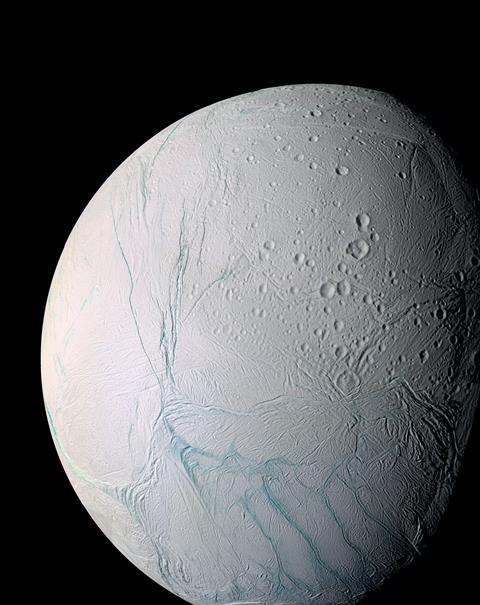
The first flyby of Enceladus raised flags that it wasn’t the airless icy body previously assumed, explains Cassini project scientist Linda Spilker. So Cassini went closer, and then closer again. ‘On the third flyby we detected in the thermal infrared a hot South Pole and we saw up-close the four tiger stripe fractures,’ she says. The tiger stripe markings near the South Pole are 200°C warmer than the rest of the moon. As with Europa, it is assumed that friction caused by gravitational forces from Saturn means Enceladus heats up from the inside out.
This third flyby also collected evidence of a plume of material jetting out of the stripes. ‘Of course that got us more intrigued about Enceladus,’ says Spilker. ‘Some of the following 20 flybys flew directly through the plume material and sampled the gases and particles in it. That’s when we found water vapour, a salty reservoir and organics.’
The ion and neutral mass spectrometer on board Cassini detected organic molecules in the plumes, both in the gases and in the particles within it, up to the limit of the instrument. ‘They could detect up to 100 atomic mass units. There are groups of C2 to C6 and possibly beyond,’ explains Spilker.
We found water vapour, a salty reservoir and organics from Enceladus’s polar jets
Although it was ‘very exciting to find these organics’, it is not yet possible to say whether they were formed by living things or not, she explains. ‘The instrument doesn’t have a way to make that distinction, we need to go back with more powerful mass spectrometers, going out to a much larger range that could look for large-chain parent molecules such as amino acids and fatty acids.’
Other exciting findings in the plume data were the excess of hydrogen and the detection of tiny grains of nanosilica, which can only form in very hot water. ‘Those two pieces of information together pointed to evidence of hydrothermal vents on the seafloor of Enceladus,’ says Spilker. Hydrothermal vents form at locations where seawater meets magma. Water goes down cracks into the core, is heated and then comes back out again at force.
On Earth, hydrothermal vents are teeming with organisms that are not seen anywhere else. These microbes get their energy from the nutrients in the mineral-rich fluids coming up from the Earth’s core. They are thought to be the only organisms on Earth that don’t ultimately get their energy from the sun. Hydrothermal vents on Enceladus, and other planetary bodies, are therefore potential sites for life.
Enceladus, like Europa, is believed to have a global ocean under its icy surface. A study of 10 years of Cassini data, looking at the vibration of the moon, found that the core and the crust are not fixed together. ‘A way to decouple them is to have a global liquid water ocean,’ says Spilker. ‘There are now estimates that this global ocean on Enceladus could be hundreds of millions to even billions of years old – it could even have lasted since the time Enceladus formed.’ That’s exciting because it means there has been a huge amount of time in a huge body of water for life to potentially form, she explains.
The data collected by Cassini shows that Enceladus has the three ingredients needed to support life, but no evidence that life is actually present has yet been found. Telescopes, explains Spilker, aren’t great for exploring this moon: ‘Enceladus is very tiny, and it’s very close to Saturn, making it hard to detect it from the Earth.’ And for this reason a further mission here is desirable, she explains.
Titan
Cassini was not the first spacecraft to visit Saturn’s moons. Voyager 1 visited the region in 1980. When researchers went back to reprocess some of these old images, after Cassini had discovered Enceladus’s plumes, they realised that the jets had actually been captured on camera 25 years earlier.
It was Titan, however, that was the main target for Nasa’s Voyager mission. In 1944, astronomers used telescopes to discover that this moon had a thick atmosphere containing methane. Data collected by Voyager spacecraft then showed that it was mostly nitrogen, a few percent methane and smaller amounts of hydrocarbons such as ethane, propane and acetylene. ‘We had measurements from the Infrared Space Observatory during the mid-1990s that helped us find some more complex molecules,’ explains Sarah Hörst, an atmospheric chemist at Johns Hopkins University in Baltimore, US. ‘Benzene was the heaviest molecule that we knew about before Cassini,’ she adds.
The chemistry gets very complicated very quickly at Titan
‘Cassini got there and started doing measurements of the atmosphere and instead of finding things that had a mass of 78 like benzene, Cassini found that there are ions on the top of Titan’s atmosphere that have masses of more like 10,000,’ Hörst says. ‘So that’s seven or eight hundred carbon atoms rather than six or seven carbon atoms.’
The instruments on board Cassini – and its Huygens probe, which landed on Titan in January 2005 – were not able to identify these ions, just confirm that they exist. These molecules are formed when the nitrogen and methane on the outside of the atmosphere are broken down by ultraviolet light and radiation, and then recombine in all kinds of ways. ‘The chemistry gets very complicated very quickly at Titan,’ explains Ralph Lorenz, also at Johns Hopkins University. Hörst agrees: ‘One of the biggest things that Cassini has told us about Titan is that the chemistry is even more complicated than we thought it was before we got there.’
Titan is also thought to have a liquid water ocean beneath its icy surface. ‘The ice crust is probably much thicker on Titan than it is on Europa and Enceladus,’ says Hörst. Again, as is suspected for the other moons with subsurface oceans, life could exist down there. But this isn’t the only environment on Titan where life could potential form.
Titan has lakes across its poles. It is the only place other than Earth known to have a liquid on its surface. But with a surface temperature of –180°C these can’t contain water. The Cassini mission determined that they are full of supercold ethane and methane, which are gases on Earth. On Titan, these liquid hydrocarbons carve river valleys, form clouds and fall as rain. But could they also act as the solvent needed to support life?
‘If there are organisms on the surface, they would have to use very different chemistry from us,’ explains Hörst. ‘It might still be based on carbon, nitrogen, hydrogen and oxygen. It might just be a different set of molecules that work better at those temperatures with that solvent.’
Organic matter is constantly falling out of the atmosphere
‘We don’t really understand the full range of chemical possibilities in a non-polar solvent like liquid methane,’ explains Lorenz. ‘It has been speculated that is might be possible to form membranes with acrylonitrile. The idea is that this sort of assembly is called an azotosome, an analogue to the liposome in conventional biological chemistry.’ The methane-loving and methane-hating ends of the molecules might allow acrylonitrile to arrange in a spherical vesicle able to isolate one set of chemicals from another.
‘We know some possibilities for the functions that acrylonitrile chemistry needs to perform to eventually become living, but we don’t know how all the steps could be done. We don’t know, of course, how all the steps could be done in water either,’ says Lorenz. ‘So that’s two different environments that we need to look for life on Titan. We can look for life as we know it but also life as we don’t know it, which complicates things.’
Hörst and Lorenz are part of a mission in the ideas stage aiming to do just this. In December 2017, Nasa announced further funding to develop the possibility of sending a drone-like rotorcraft called Dragonfly to explore Titan’s prebiotic chemistry. In the spring of 2019, Nasa will announce whether or not Dragonfly will take off.
‘If we’re fortunate enough that Dragonfly is funded, we would launch in 2025 and we get to Titan in 2034,’ explains Lorenz. Dragonfly would be a quadcopter able to fly a few tens of kilometres in an hour, further than any planetary rover has ever travelled. ‘The peculiarities of the Titan environment, with its low gravity and thick atmosphere, means it’d be very easy to relocate the lab using rotors. We’ll be able to take off and explore progressively more interesting targets,’ he says.
Dragonfly would hold a suite of instruments for looking at the chemistry of Titan’s surface and atmosphere. It would also be able to probe under the surface using a drill and a gamma ray spectrometer. ‘[Using these we would get] information about things that you can’t necessarily see if we were just looking at the surface,’ explains Hörst. ‘Organic matter is constantly falling out of the atmosphere and it can cover up whatever is underneath.’
Before 2034, telescopes will continue to be used to study Titan. ‘The Atacama Large Millimetre Array, a radio telescope array in the Atacama desert in South America, is a really incredible resource for us,’ Hörst says. ‘They use Titan as a calibration target and all those data are publicly available. People are already discovering quite a number of new molecules in Titan’s atmosphere using that data.’ The telescope will also allow information about how these molecules are distributed in Titan’s atmosphere to be discovered. ‘And then once James Webb launches, hopefully we’ll be able to get some good Titan science from that telescope too.’
Beyond our solar system
The James Webb Space Telescope (JWST) is scheduled to launch in the first half of 2019. It will ‘park’ in Lagrange point two, a deep space location where the gravitational pull of the sun, Earth and moon cancel each other out. ‘It will just sit there and orbit around that point in space,’ explains Nikole Lewis, an astronomer at the Space Telescope Science Institute in Baltimore, US, where the JWST is being developed. It is also the science operations centre for the Hubble Space Telescope.
As well as studying planets and moons in our solar system, the JWST will be looking beyond our solar system and joining the study of exoplanets that have the potential to harbour life. In February 2017, it was announced that the Trappist-1 star has seven Earth-sized planets orbiting it. Just 39 light years away, this solar system looks very similar to our own. And at least three of the planets are in the so-called habitable zone meaning they could host liquid water on their surfaces.
The Trappist-1 planets were found using the Spitzer Space Telescope, the Transiting Planets and Planetesimals Small Telescope (Trappist) in Chile and some other Earth-based telescopes. And since their discovery, a team co-led by Lewis has been screening some of these planet’s atmospheres using Hubble. JWST will add a great many more details to the picture her team is currently forming of these exoplanets and their atmospheres.
JWST is an infrared telescope with much greater sensitivity than any of its predecessors. It will be able to detect the chemical fingerprints – if they are there – of components of exoplanets’ atmospheres including water, methane, carbon dioxide, oxygen and ozone.
Lewis’s team will also be searching for evidence that there is life on one or more of these planets, altering the chemistry in its atmosphere. ‘We expect certain chemical species to be in balance and then life throws that balance off,’ she explains. ‘We’re going to be able to search a large number of planets looking for these signs of imbalance in their atmospheres that would indicate that there’s life there.’
Lewis is clearly excited about what the future may bring. ‘It’s going to be a very transformational time in terms of exoplanets and also solar system science. Pushing ahead, trying to understand the moons in our solar systems and then maybe their potential for supporting life.’

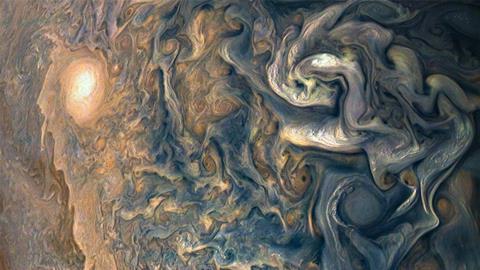



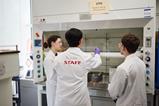
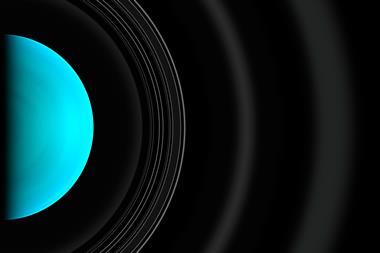

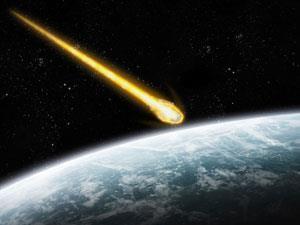









2 readers' comments